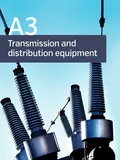Summary
The development of MV and HV switchgear comes along with a bundle of simulation and testing tasks to ensure a safe and reliable operation of the equipment over several decades. During normal operation as well as in case of short-circuit events the temperature inside the switchgear rises above ambient level. The ability to carry the rated nominal current without exceeding the allowed temperature rise limits is demonstrated in a temperature rise test. Temperature rise limits are given in the standards, depending on the used insulating gas, in order to prevent accelerated ageing of the equipment. The optimization of existing as well as the development of future switchgear requires the knowledge to predict the temperature rise of the equipment during the different iterations of the development process. For this purpose, simulation tools and methods are required, which strongly depend on the used physical models and material parameters. The TB gives a guideline to handle temperature rise simulations and their results. The working group conducted a benchmark study and applied multiphysics simulation tools to calculate the temperature rise of unknown test devices, that were designed and manufactured by the working group. Deviations between the simulation results as well as between experiment and simulation are discussed and explained by differences in the modelling of heat generation and heat dissipation.
Additional informations
| Publication type | Technical Brochures |
|---|---|
| Reference | 830 |
| Publication year | |
| Publisher | CIGRE |
| Study committees | |
| Working groups | WG A3.36 |
| File size | 9 MB |
| Pages number | 111 |
| Price for non member | 210 € |
| Price for member | Free |
Authors
M. KRIEGEL, A. PEDERSEN


